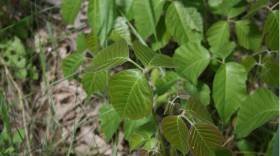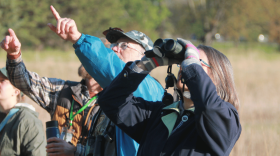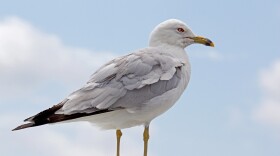-
I encourage you to consider a trip to the International Peace Garden this summer. There is much to see and do there, including exploring a little Natural North Dakota and Manitoba in the Turtle Mountain aspen forest.
-
Summer is upon us! It seems that every year, questions come up on how to identify poison ivy, and what to do if a dog has been sprayed by a skunk. A little reminder of identification of poison ivy and treatment of skunk spray might be helpful.
-
The Amphibians and Reptiles of North Dakota website lists eight species of snakes documented in the state. I assume that most North Dakotans are familiar with many of these snakes, but I suspect that few have ever heard of or seen a smooth green snake (Opheodrys vernalis).
-
Whether it's watching robins in the yard, seeing an eagle soar overhead, or trying to identify a bird making that sweet call from some thick brush, birds seem to draw our interest. But many among us may not be aware of a couple aids that can help enhance our birding experiences.
-
I was perusing Robert Stewart’s Breeding Birds of North Dakota (1975) recently and noticed that he listed three species of gulls nesting in the state: California, Franklin’s, and ring-billed. He also noted that herring gulls were nesting on Stump Lake back in 1884.
-
A keystone species can be loosely defined as a species that has a disproportionately large effect on a community. They are critical components. They hold things together. And their removal from a community can set off a series of events that change the community into something quite different.
-
If the pasque flowers are not in bloom near you, they will be soon. And there are other wildflowers as well, including Draba and prairie smoke. Beauty often comes in small packages, and the spring wildflowers will help brighten your day.
-
One of the common signs of spring is when we look up at the trees and see something different up there. The trees must be leafing out! Spring is officially here! But much of what we see up there is more likely flowers.
-
Both grasslands and birds are rapidly decreasing in Canada — less than 15% of the native grasslands remain. To address the issue, Birds Canada has developed the Bird-Friendliness Index.
-
If you like to watch falling stars, this next month or so is a good time to see them. The Lyrids meteor shower will start soon, and it overlaps with the Eta Aquarids meteor shower. Between the two, the show will run to the end of May.
Play Live Radio
Next Up:
0:00
0:00
Available On Air Stations









